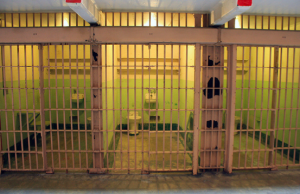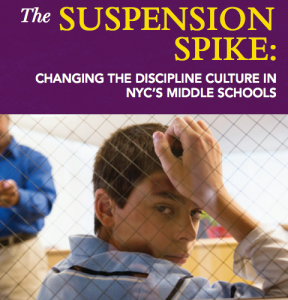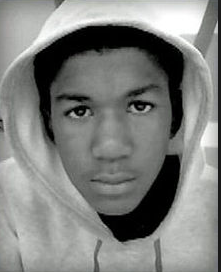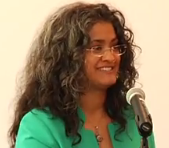News & Announcements
- Details
- Written by Joshua Wachtel
This beautifully animated short film walks through a Family Group Decision Making conference (FGDM, also known as a Family Group Conference) from the point of view of a mother at risk of losing her children.
Norwegian Directorate for Children, Youth and Family Affairs (Bufdir) is the Norwegian governmental office for the welfare and protection of children and families.
This video is also available in Norwegian and Russian.
Watch a similar video about family group conferences from a child's perspective.
Find information about IIRP's Family Power program.
- Details
- Written by Ted Wachtel
You may download a PDF of this article for your personal use.
This article is an excerpt from IIRP president and founder Ted Wachtel’s new book, Dreaming of a New Reality: How restorative practices reduce crime and violence, improve relationships and strengthen civil society, published by the International Institute for Restorative Practices, in association with the Piper’s Press. Through stories and statistics, the book demonstrates the promise of restorative practices to heal victims, prevent bullying, curb conflict, reduce school disciplinary problems and boost workplace satisfaction and productivity. It also outlines the history and development of this growing social movement, as well as a vision for its future.
- Details
- Written by Joshua Wachtel
 Photo by miss_millions at Flickr Creative Commons
Photo by miss_millions at Flickr Creative Commons
A few months ago I posted a piece about a report issued in the UK by Pat Nolan, director of Justice Fellowship, the criminal justice reform arm of Prison Fellowship International, about a shift in conservative thinking on crime in the US and a possible alliance between the right and the left on including restorative justice as a way to shift the current emphasis on prisons. Since the article was published in the UK and not here in the US, I put a question mark at the end of my post, which I titled "A shift in conservative American thinking on justice?"
But now a piece has appeared in the Wall Street Journal – indeed on the front page of the June 21, 2013 issue – titled "As Prisons Squeeze Budgets, GOP Rethinks Crime Focus" by Neil King, Jr., and it confirms something is afoot.
- Details
- Written by Joshua Wachtel
 On Tuesday, July 16, the New York City Comptroller's Office issued a report called “The Suspension Spike: Changing the Discipline Culture in NYC’s Middle Schools,” which "offers a blueprint for replacing the DOE’s failed zero-tolerance policy with restorative justice practices that help middle-school students stay in school and remain on the path to college and career readiness."
On Tuesday, July 16, the New York City Comptroller's Office issued a report called “The Suspension Spike: Changing the Discipline Culture in NYC’s Middle Schools,” which "offers a blueprint for replacing the DOE’s failed zero-tolerance policy with restorative justice practices that help middle-school students stay in school and remain on the path to college and career readiness."
According to a press release from the Comptroller's Office, "The report found that New York City middle schools suspended an average of 100 students a school day in the 2011-2012 school year. Almost all of those suspended were either black or Hispanic. It also found that middle-school students received 68 percent more suspensions than high-school students."
- Details
- Written by Joshua Wachtel
This 9-minute video from Leeds City Learning Centres in the UK gives a good overview of restorative practices use in the Carr Manor Community School. Many students, along with teachers and administrators, explain in their own words what restorative practices are, how they are used and what impact they have on the school environment.
Watch Carr Manor Restorative Practice on Vimeo.
Watch another film about Leeds' use of the "Family Learning Signature."
- Details
- Written by Joshua Wachtel
 Considering the national focus on the George Zimmerman murder trial, particularly over the past month during the trial and its conclusion with a "not guilty" verdict Saturday, this piece, "Restorative Justice for Trayvon Martin," seems particularly relevant. Written by Dr. Mikhail Lyubansky, a professor of psychology at the University of Illinois, Urbana-Champaign, and originally published in the Journal for Social Action in Counseling and Psychology, Volume 5, Number 1, Spring 2013, a "Special Issue on Violence against Individuals and Communities: Reflecting on the Trayvon Martin Case," this piece reflects on a variety of issues, including racism, the justice system, and the needs of communities for healing after a crime.
Considering the national focus on the George Zimmerman murder trial, particularly over the past month during the trial and its conclusion with a "not guilty" verdict Saturday, this piece, "Restorative Justice for Trayvon Martin," seems particularly relevant. Written by Dr. Mikhail Lyubansky, a professor of psychology at the University of Illinois, Urbana-Champaign, and originally published in the Journal for Social Action in Counseling and Psychology, Volume 5, Number 1, Spring 2013, a "Special Issue on Violence against Individuals and Communities: Reflecting on the Trayvon Martin Case," this piece reflects on a variety of issues, including racism, the justice system, and the needs of communities for healing after a crime.
- Details
- Written by Laura Mirsky
 Attorney and author Hazel Thompson-Ahye has long been deeply committed to reforming justice. Now it is her mission to implement restorative practices in her home country of Trinidad and Tobago, as well as other parts of the Caribbean.
Attorney and author Hazel Thompson-Ahye has long been deeply committed to reforming justice. Now it is her mission to implement restorative practices in her home country of Trinidad and Tobago, as well as other parts of the Caribbean.
After first hearing about restorative justice in 1999 from New Zealand prison chaplain, Father Jim Consedine, at a Penal Reform International conference in London, Thompson-Ahye was inspired to become involved in initiatives that attempted to bring restorative justice to Trinidad and the Bahamas.
Then in 2012 she read an article online from the IIRP about how restorative practices could help stop the school-to-prison pipeline and thought, “There’s a school teaching this? I have to go.”
- Details
- Written by Joshua Wachtel
 Several pieces of news have come through recently from New Zealand, the Land of the Long White Cloud and birthplace of "Family Group Conferencing."
Several pieces of news have come through recently from New Zealand, the Land of the Long White Cloud and birthplace of "Family Group Conferencing."
The precursor to restorative conferences were developed and ensconced in law in New Zealand as part of the Children, Young Persons and their Families Act of 1989. This law led on the one hand to the family group conference (known as Family Group Decision Making in North America), which engaged extended families to develop a plan when a child was at risk of placement outside the home in cases of abuse. A process was also developed to allow young offenders, along with their families and community of support, to meet face-to-face with those they had victimized. This process would subsequently be adapted by Terry O'Connell as the Real Justice conference.
- Details
- Written by Joshua Wachtel
 In this video, Sujatha Baliga, Director, Restorative Justice Project, and Senior Program Specialist, National Council on Crime and Delinquency (NCCD), gives a fascinating 12-minute talk linking her own Buddhist meditation practice to the concepts of restorative justice and restorative practices.
In this video, Sujatha Baliga, Director, Restorative Justice Project, and Senior Program Specialist, National Council on Crime and Delinquency (NCCD), gives a fascinating 12-minute talk linking her own Buddhist meditation practice to the concepts of restorative justice and restorative practices.
Baliga first recounts her own personal journey. As a victim of sexual abuse by her father, she first became a victim advocate before deciding to attend law school, initially to become a prosecutor. Just before beginning law school, however, she had a personally transformative experience during a 10-day silent mediation retreat which changed her course, and she is now what she now calls a "restorative lawyer." Rather than being a participant in an adversarial legal system, Baliga says she aims to be equally partial to all participants and adopt a "non-binary" approach to her work, which she believes is consistent with both restorative justice and meditation.
- Details
- Written by Joshua Wachtel
 Photo of crime victims, Eliza and Blake Webb by Dean Rutz in the Seattle Times
Photo of crime victims, Eliza and Blake Webb by Dean Rutz in the Seattle Times
This remarkable story, by Christine Clarridge in the Seattle Times the other day, recounts what happened after a woman found a cell phone left behind in her ransacked car. The story begins:
"When Eliza Webb found a stranger’s cellphone inside her ransacked car last month, it didn’t take a lot of sleuthing to determine two things: one, the cellphone probably belonged to the person who’d prowled her car; and two, the culprit was likely a teen."
Because Webb worked with teens, and because her husband had faced many difficulties in life due to a "youthful indiscretion," she decided not to inform police and instead see what she could work out directly with the youth involved.

Restorative Works Year in Review 2024 (PDF)
All our donors are acknowledged annually in Restorative Works.
